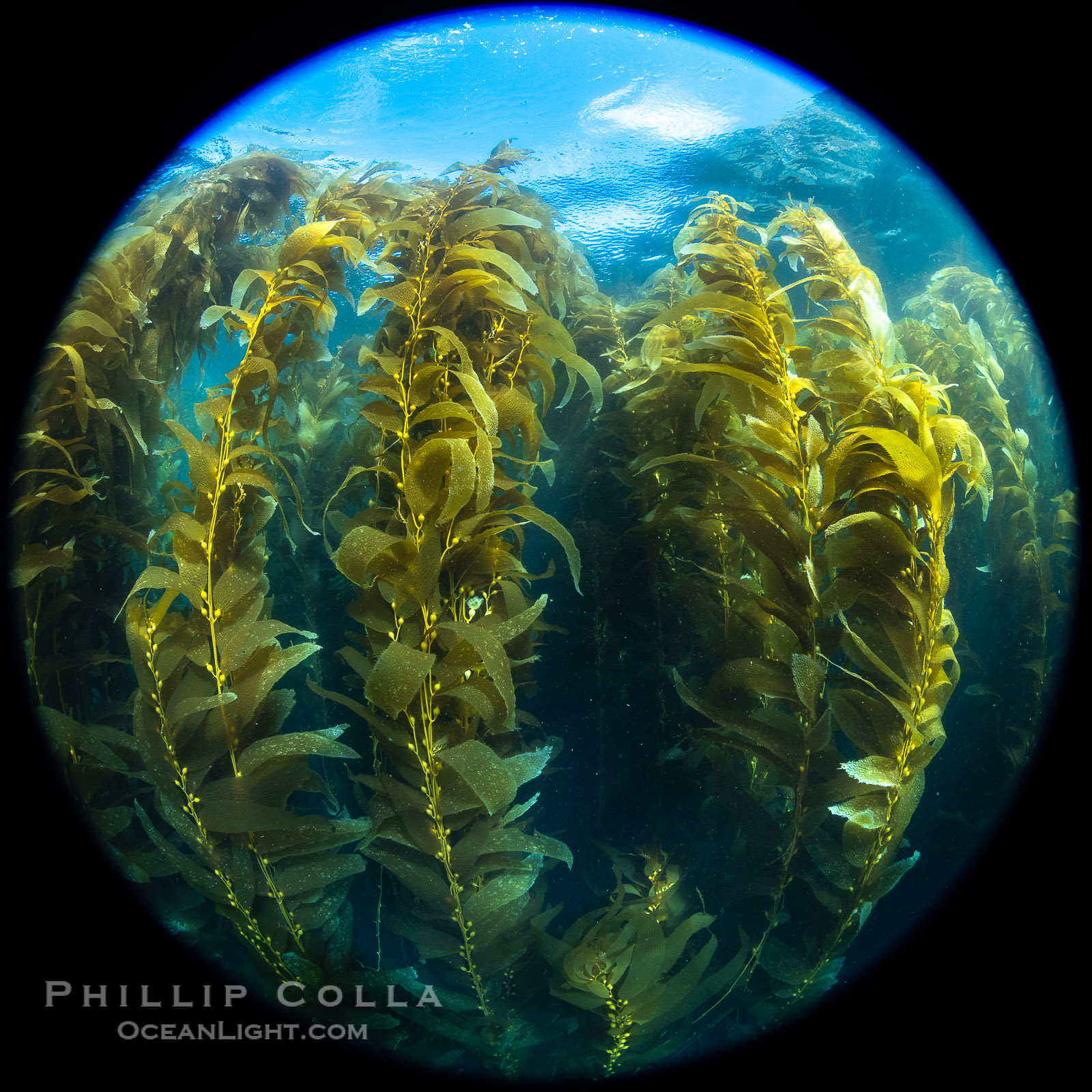“Redux” is a bit of an overstatement, since Southern California’s giant kelp (Macrocystis pyrifera), which has not looked good in recent years, is certainly not recovered. Spotty, stands of kelp here and there, but much of the vast, magnificent underwater forests at San Clemente Island and Catalina have been in a poor state for several years, for a variety of reasons. So we had to make special effort to find and dive in healthy kelp forests in 2021. Pyramid Cove at San Clemente Island offered some spectacular kelp forests, if not the best water, and I spent three days in May with friends shooting nothing but gorgonians below tall stands of mature kelp and trying to keep the ocean out of my dry suit (I mostly succeeded on the latter) . Then in June, July and August I made a number of trips to the West End of Catalina, again with dive friends, since that is where some of the healthiest kelp forests reside at Catalina. After a shitty year of discouraging pandemic and its accompaniment of cancelled dive trips, it was great to get out with good friends, warm sun (usually), clear water (mostly) and vibrant, luxurious, healthy kelp. Here are some of my favorite kelp photos from 2022. Regarding the circular fisheye lens: the water was so poor at San Clemente Island relative to past years that I had to get as close as possible to whatever I was photographing in order to make a clean image, thus the circular fisheye. I liked the results, though, and kept using it, perhaps overusing it, once we found better water later in the summer. Cheers, and thanks for looking!
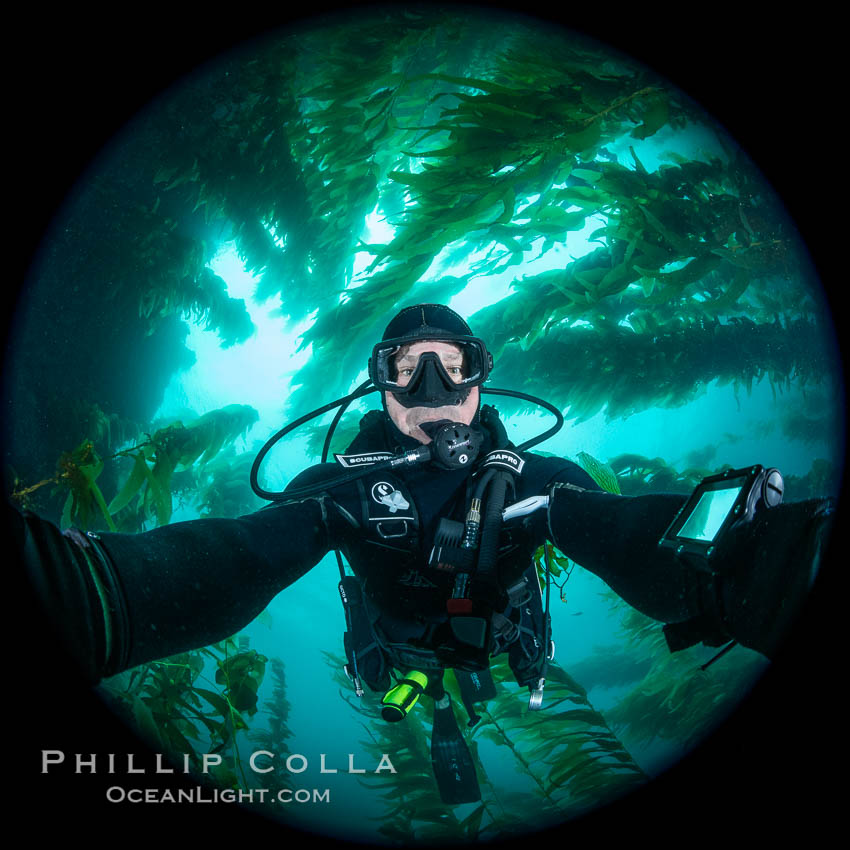
Self portrait in kelp forest, Catalina Island.
Image ID: 37274
Species: Giant kelp, Macrocystis pyrifera
Location: Catalina Island, California, USA
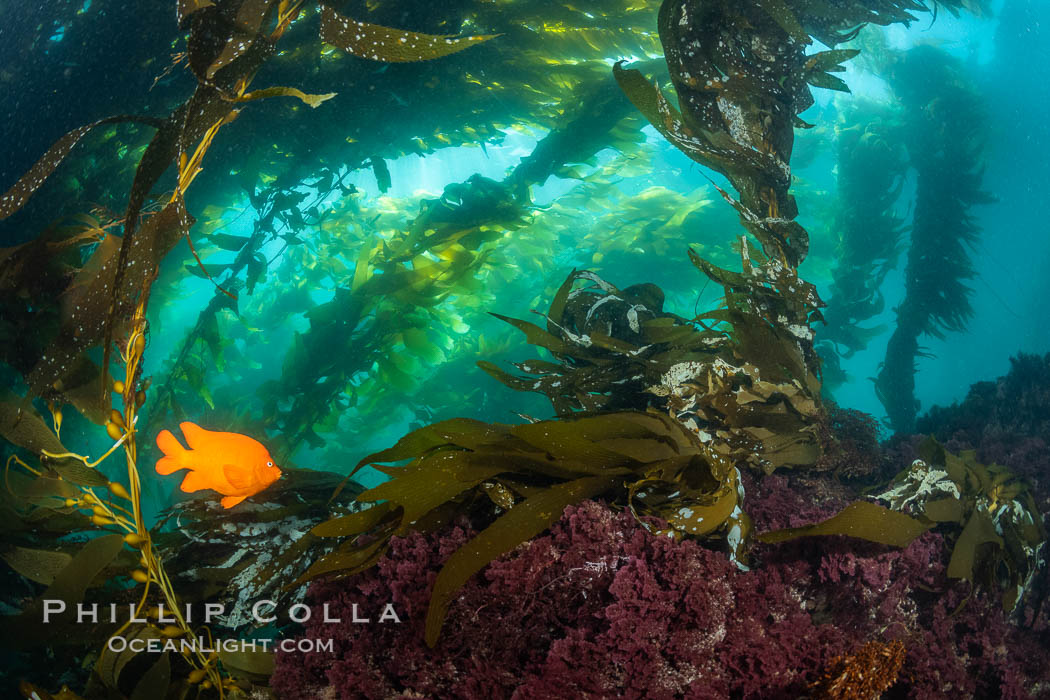
Garibaldi swims in the kelp forest, sunlight filters through towering giant kelp plants rising from the ocean bottom to the surface, underwater.
Image ID: 37091
Species: Garibaldi, Hypsypops rubicundus
Location: San Clemente Island, California, USA
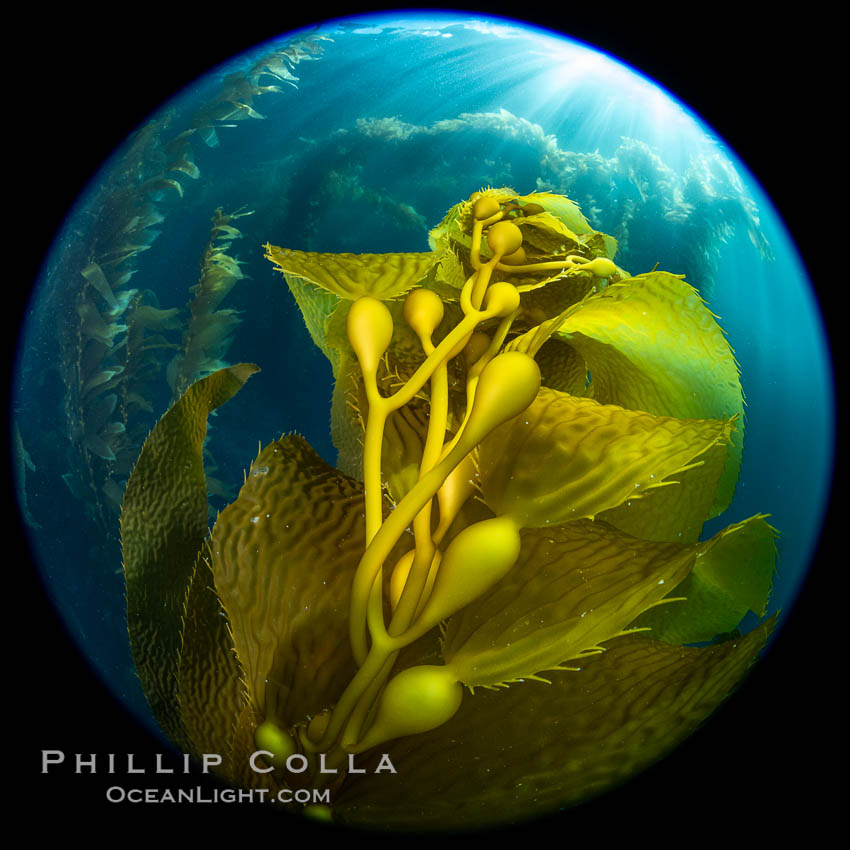
Kelp fronds and pneumatocysts. Pneumatocysts, gas-filled bladders, float the kelp off the ocean bottom toward the surface and sunlight, where the leaf-like blades and stipes of the kelp plant grow fastest. Catalina Island, California.
Image ID: 37282
Species: Giant kelp, Macrocystis pyrifera
Location: Catalina Island, California, USA
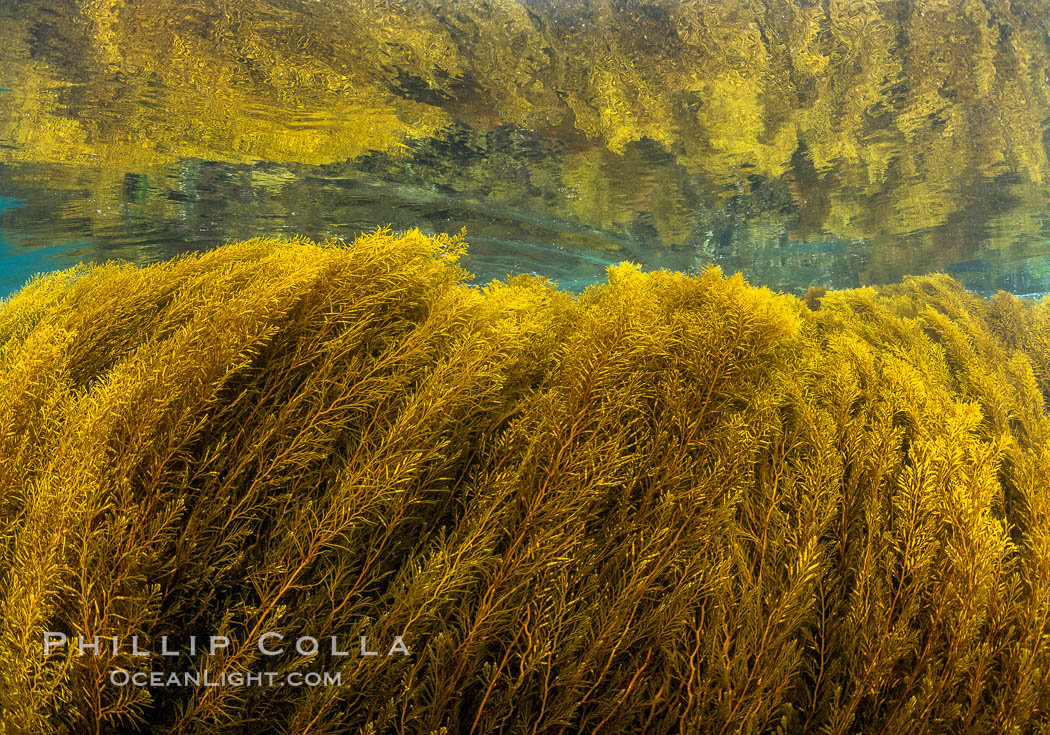
Stephanocystis dioica kelp algae on a shallow rocky reef, reflected underneath the surface of the ocean.
Image ID: 37063
Species: Stephanocystis dioica
Location: San Clemente Island, California, USA
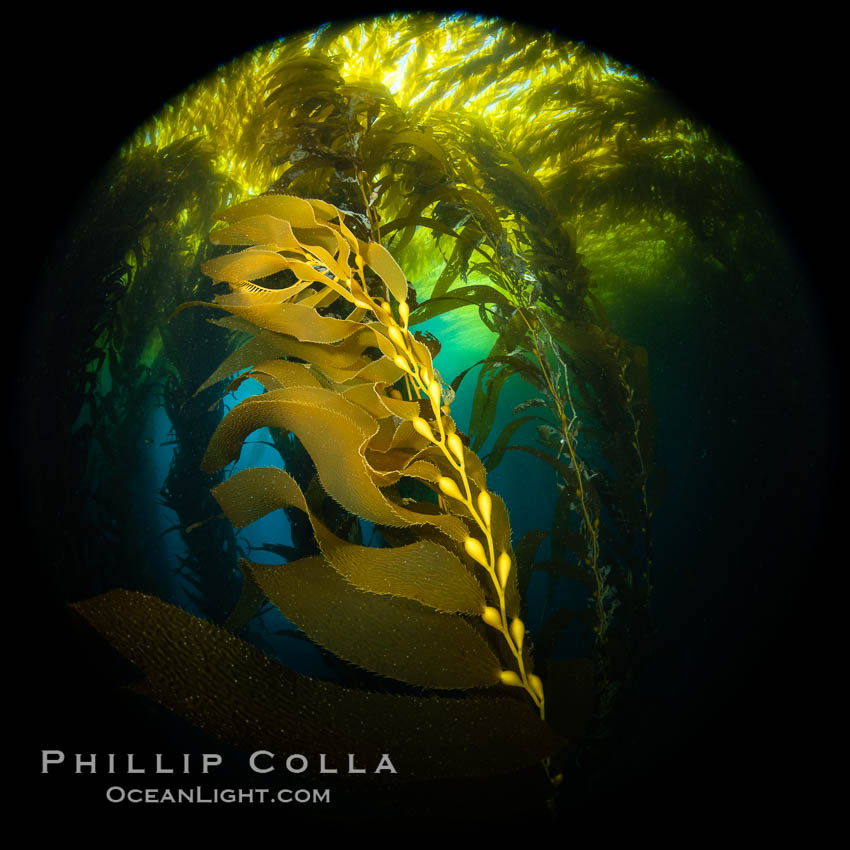
Kelp fronds and pneumatocysts, giant kelp forest, Catalina Island.
Image ID: 37199
Location: Catalina Island, California, USA
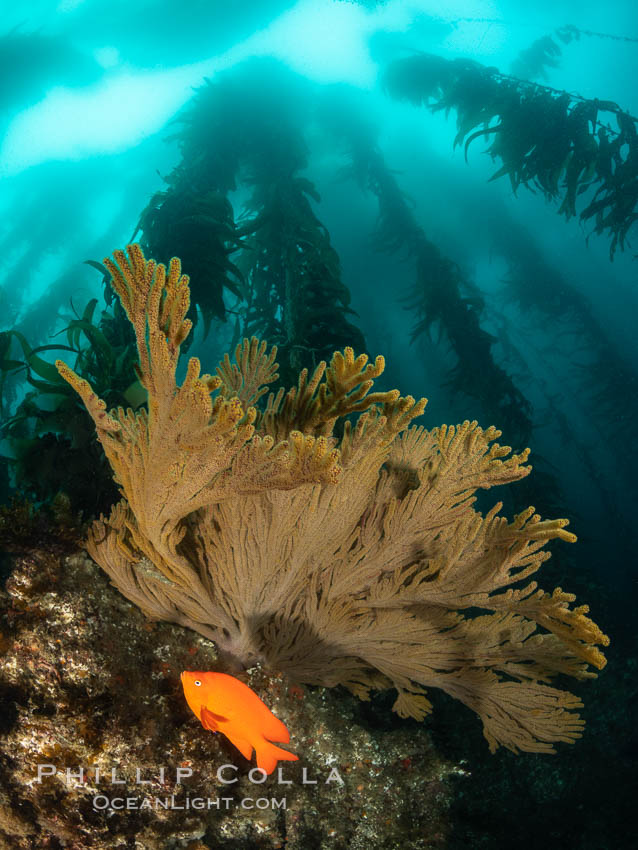
Garibaldi and golden gorgonian, with a underwater forest of giant kelp rising in the background, underwater.
Image ID: 37097
Species: California golden gorgonian, Garibaldi, Hypsypops rubicundus, Muricea californica
Location: San Clemente Island, California, USA
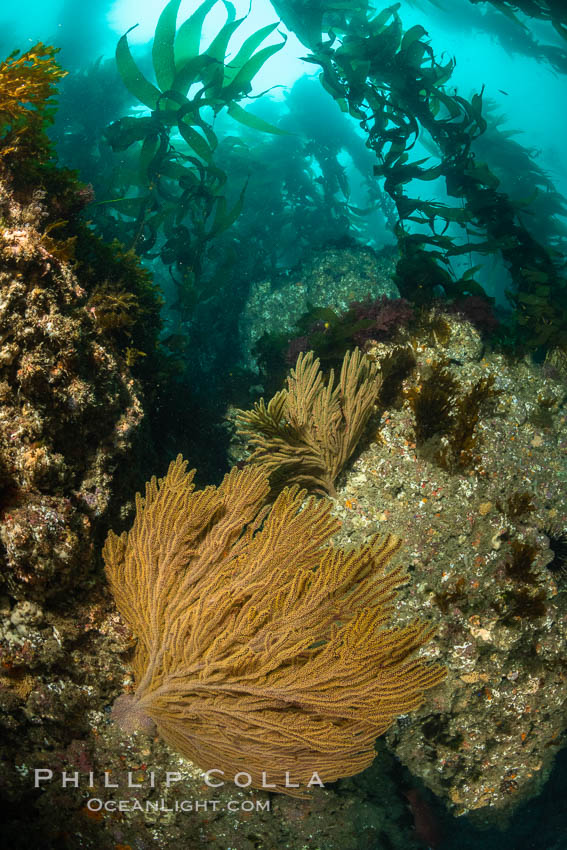
California golden gorgonian on underwater rocky reef below kelp forest, San Clemente Island. The golden gorgonian is a filter-feeding temperate colonial species that lives on the rocky bottom at depths between 50 to 200 feet deep. Each individual polyp is a distinct animal, together they secrete calcium that forms the structure of the colony. Gorgonians are oriented at right angles to prevailing water currents to capture plankton drifting by.
Image ID: 37058
Species: California golden gorgonian, Muricea californica
Location: San Clemente Island, California, USA
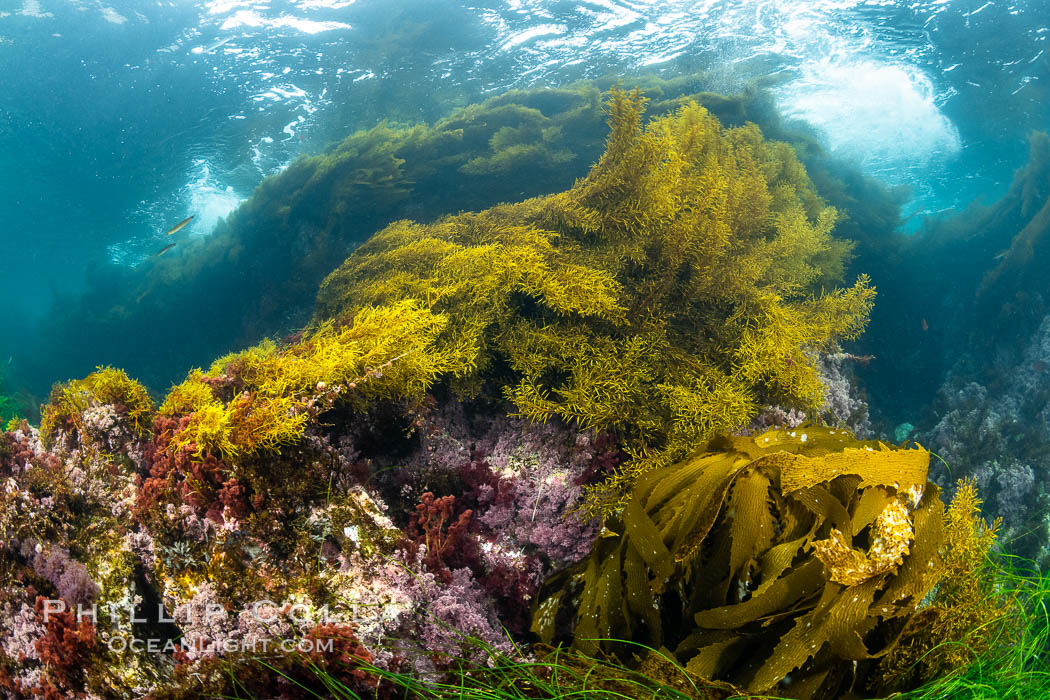
Various algae species sway with passing waves, including Stephanocystis dioica and Southern Sea Palm (Eisenia arborea).
Image ID: 37062
Species: Stephanocystis dioica
Location: San Clemente Island, California, USA
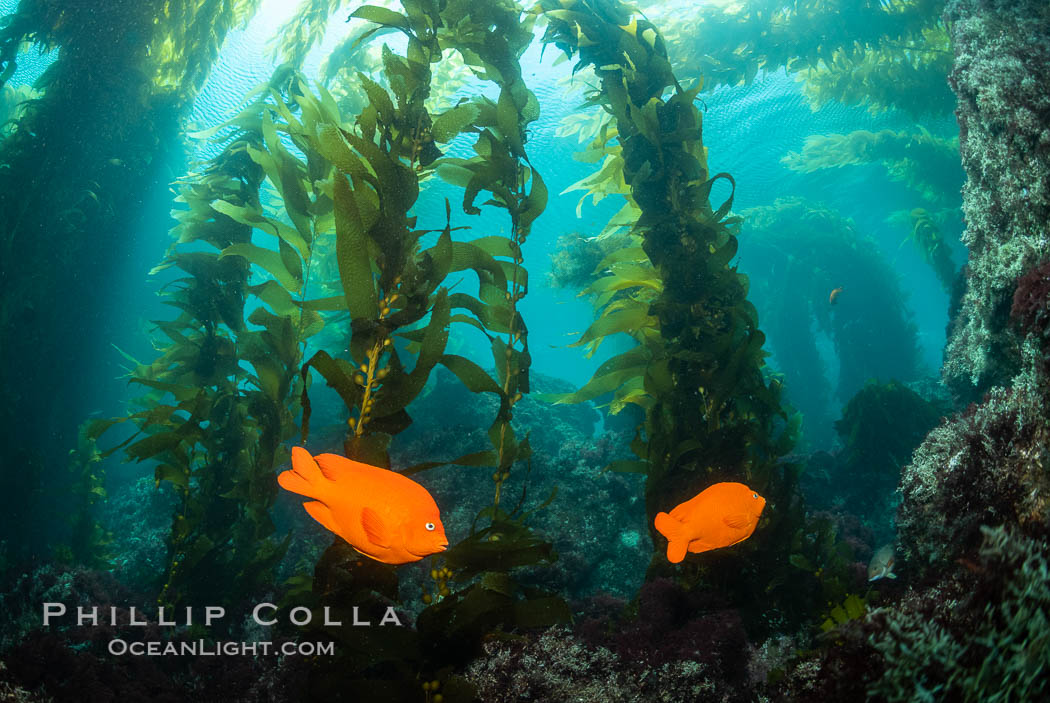
Garibaldi in kelp forest, Catalina Island.
Image ID: 37145
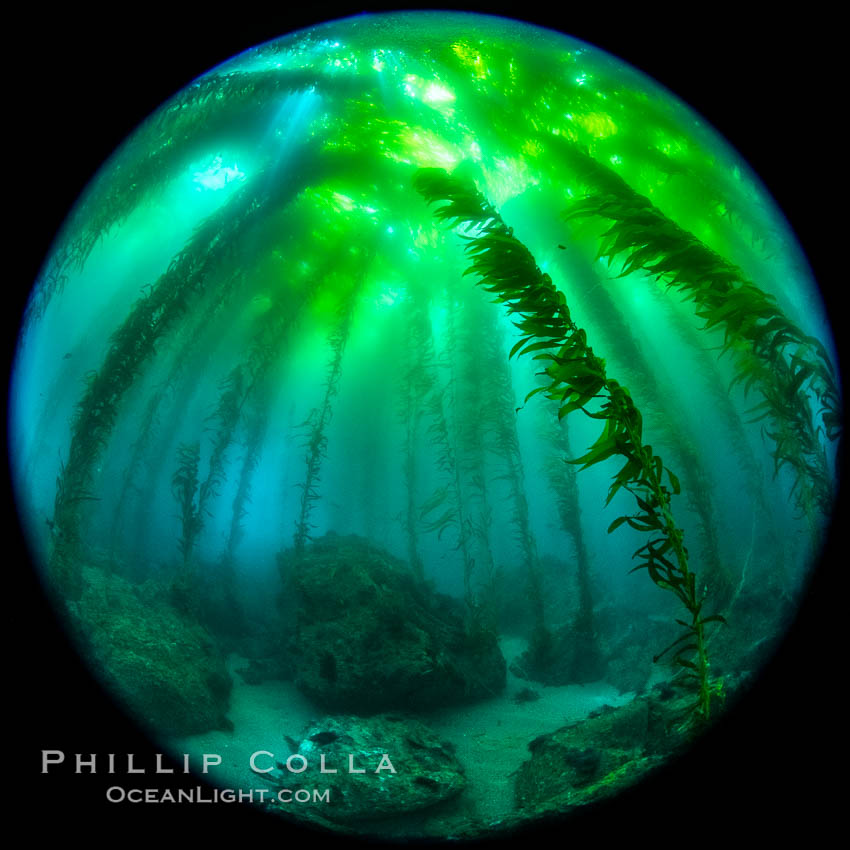
Fisheye view of a Giant Kelp Forest, Catalina Island.
Image ID: 37188
Location: Catalina Island, California, USA
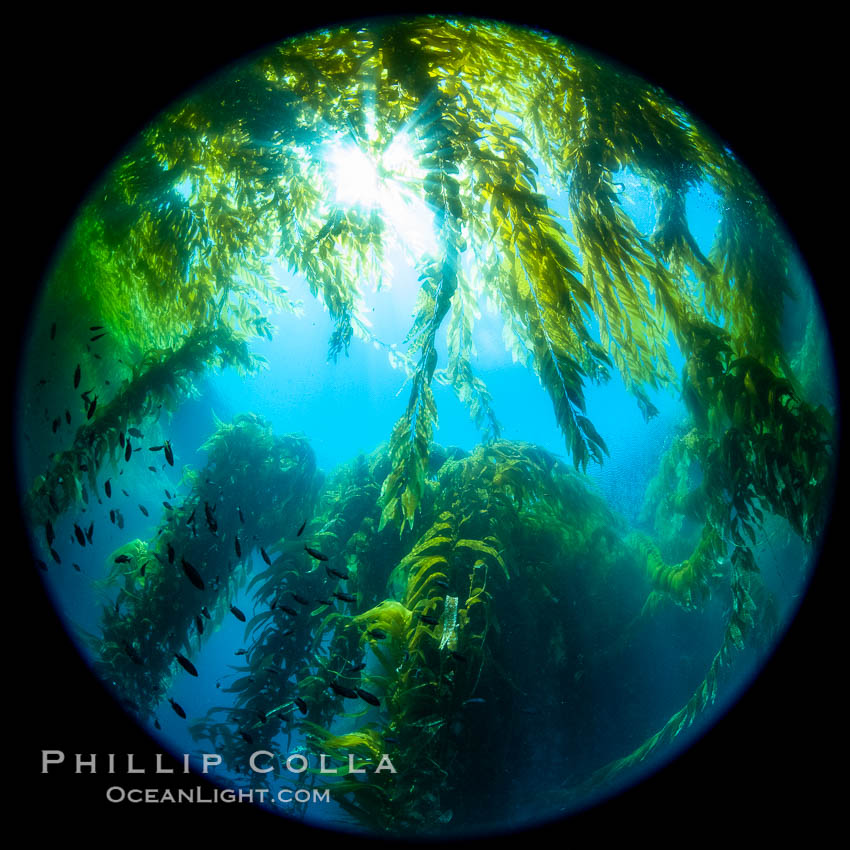
Fisheye view of a Giant Kelp Forest, Catalina Island.
Image ID: 37192
Location: Catalina Island, California, USA
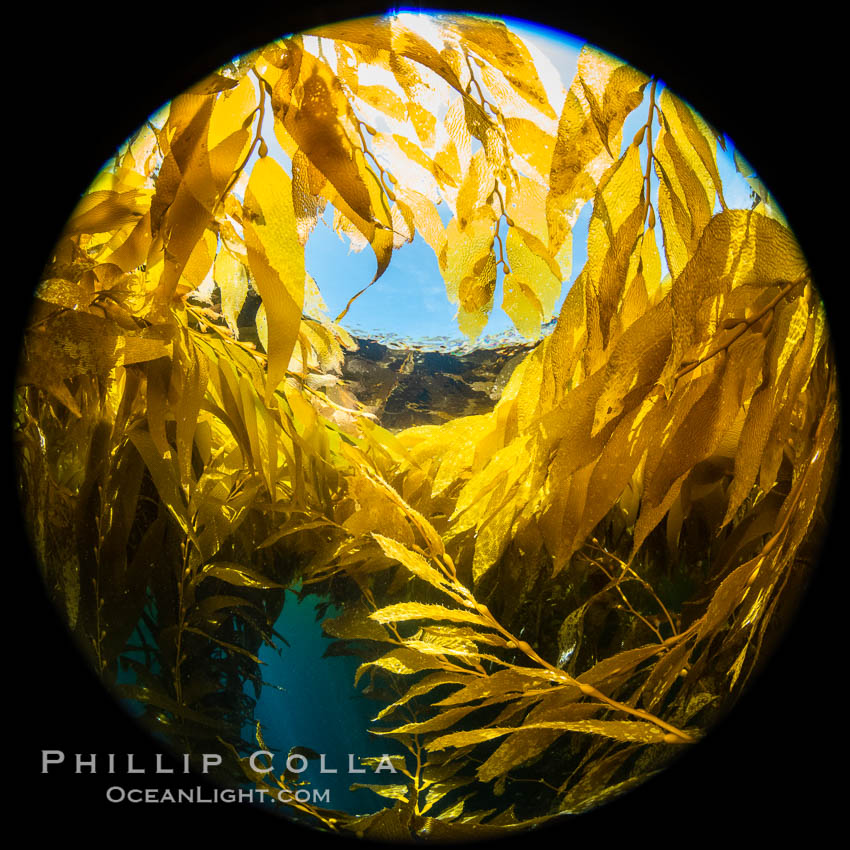
Fisheye view of a Giant Kelp Forest, Catalina Island.
Image ID: 37198
Location: Catalina Island, California, USA
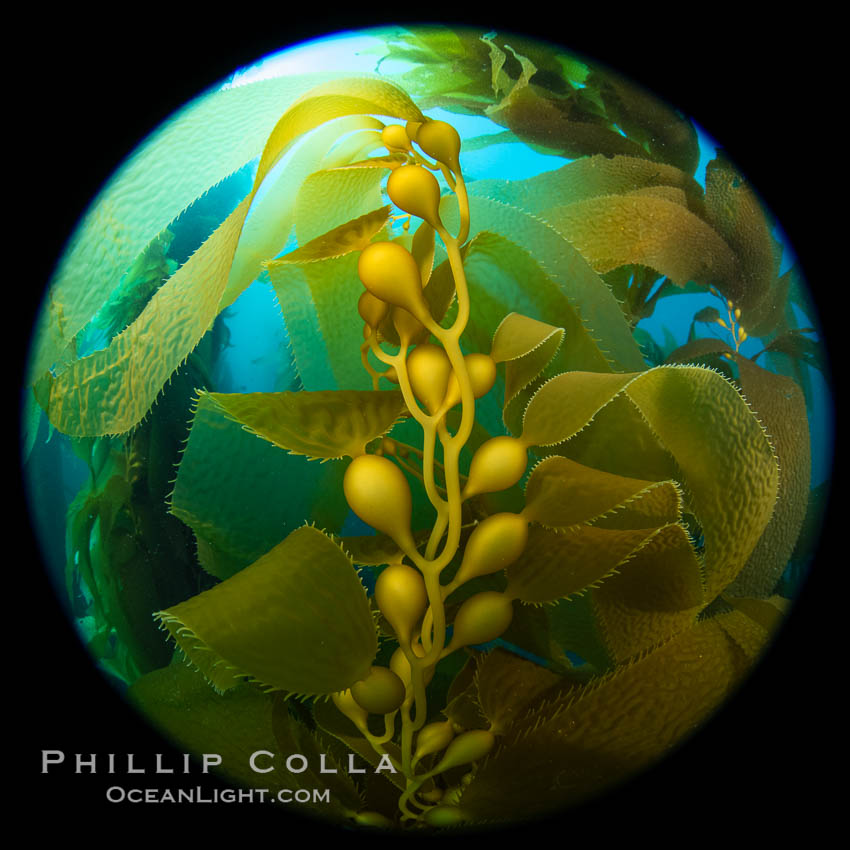
Kelp fronds and pneumatocysts. Pneumatocysts, gas-filled bladders, float the kelp off the ocean bottom toward the surface and sunlight, where the leaf-like blades and stipes of the kelp plant grow fastest. Catalina Island, California.
Image ID: 37262
Species: Giant Kelp, Macrocystis pyrifera
Location: Catalina Island, California, USA
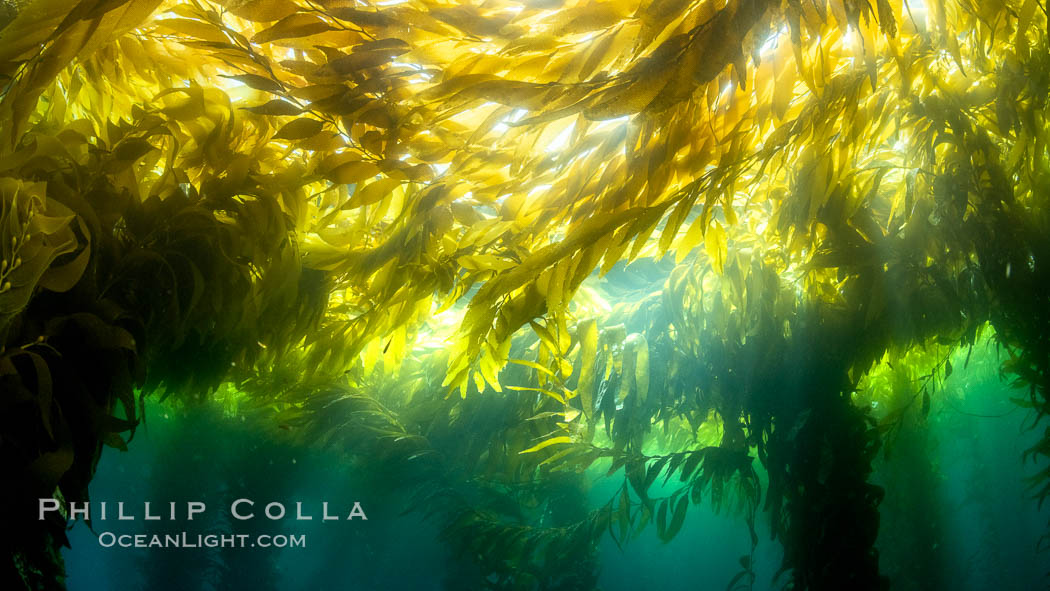
Kelp forest near Eagle Rock, West End, Catalina Island.
Image ID: 37142
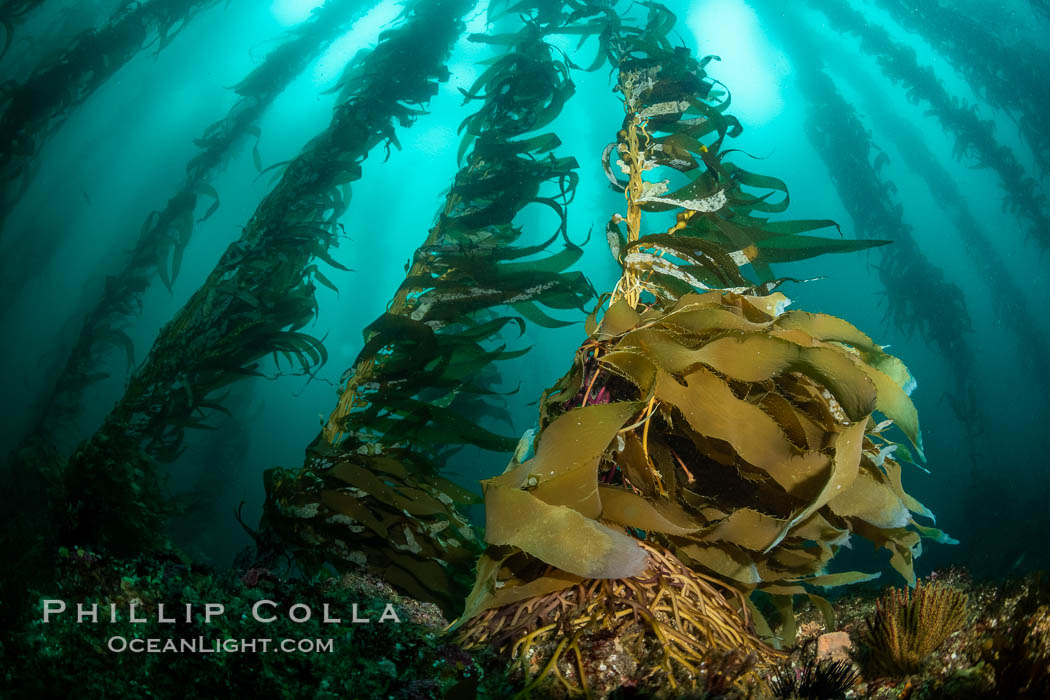
Macrocystis kelp growing up from a rocky reef, the kelp's holdfast is like a root cluster which attaches the kelp to the rocky reef on the oceans bottom. Kelp blades are visible above the holdfast, swaying in the current.
Image ID: 37075
Species: Giant kelp, Macrocystis pyrifera
Location: San Clemente Island, California, USA
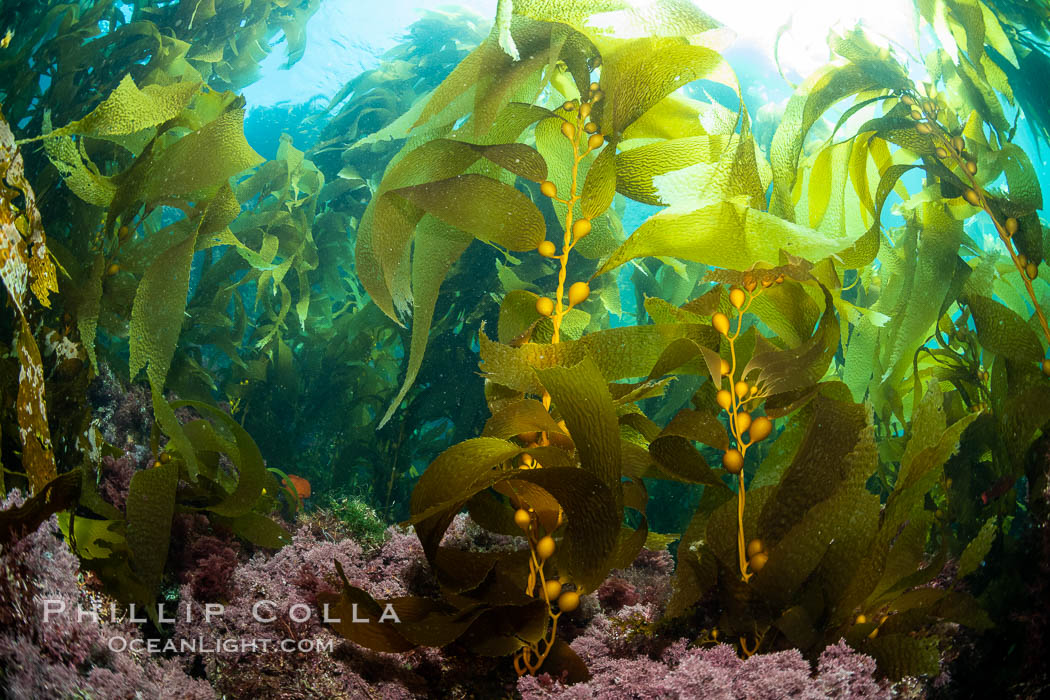
Kelp forest at West End, Catalina Island.
Image ID: 37160
Location: Catalina Island, California, USA
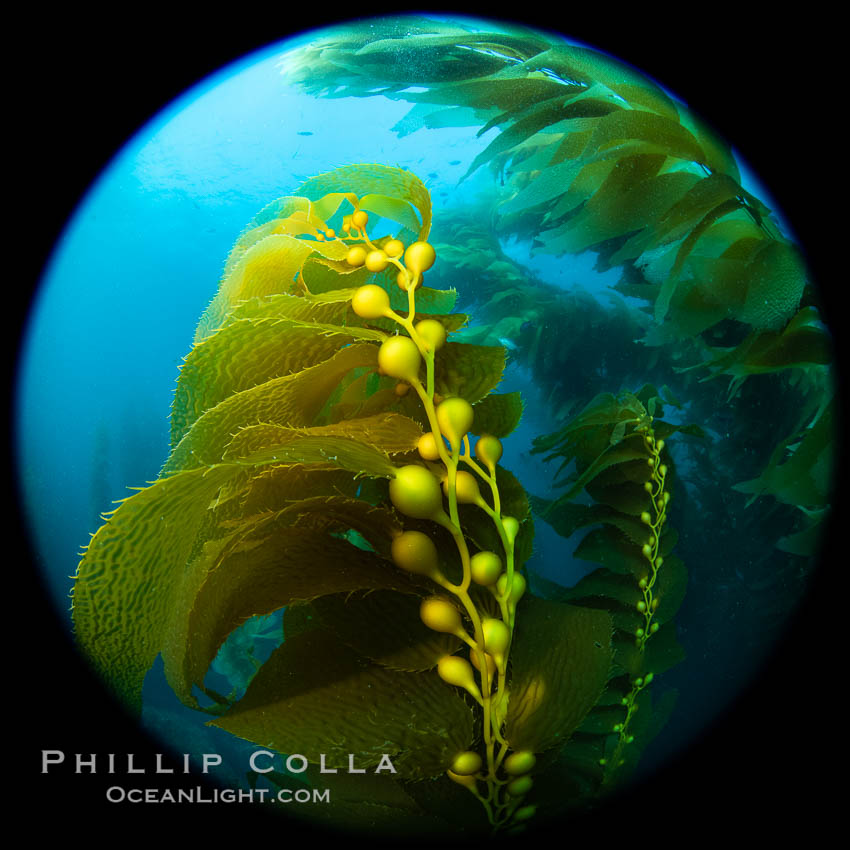
Kelp fronds and pneumatocysts. Pneumatocysts, gas-filled bladders, float the kelp off the ocean bottom toward the surface and sunlight, where the leaf-like blades and stipes of the kelp plant grow fastest. Catalina Island, California.
Image ID: 37259
Species: Giant Kelp, Macrocystis pyrifera
Location: Catalina Island, California, USA
